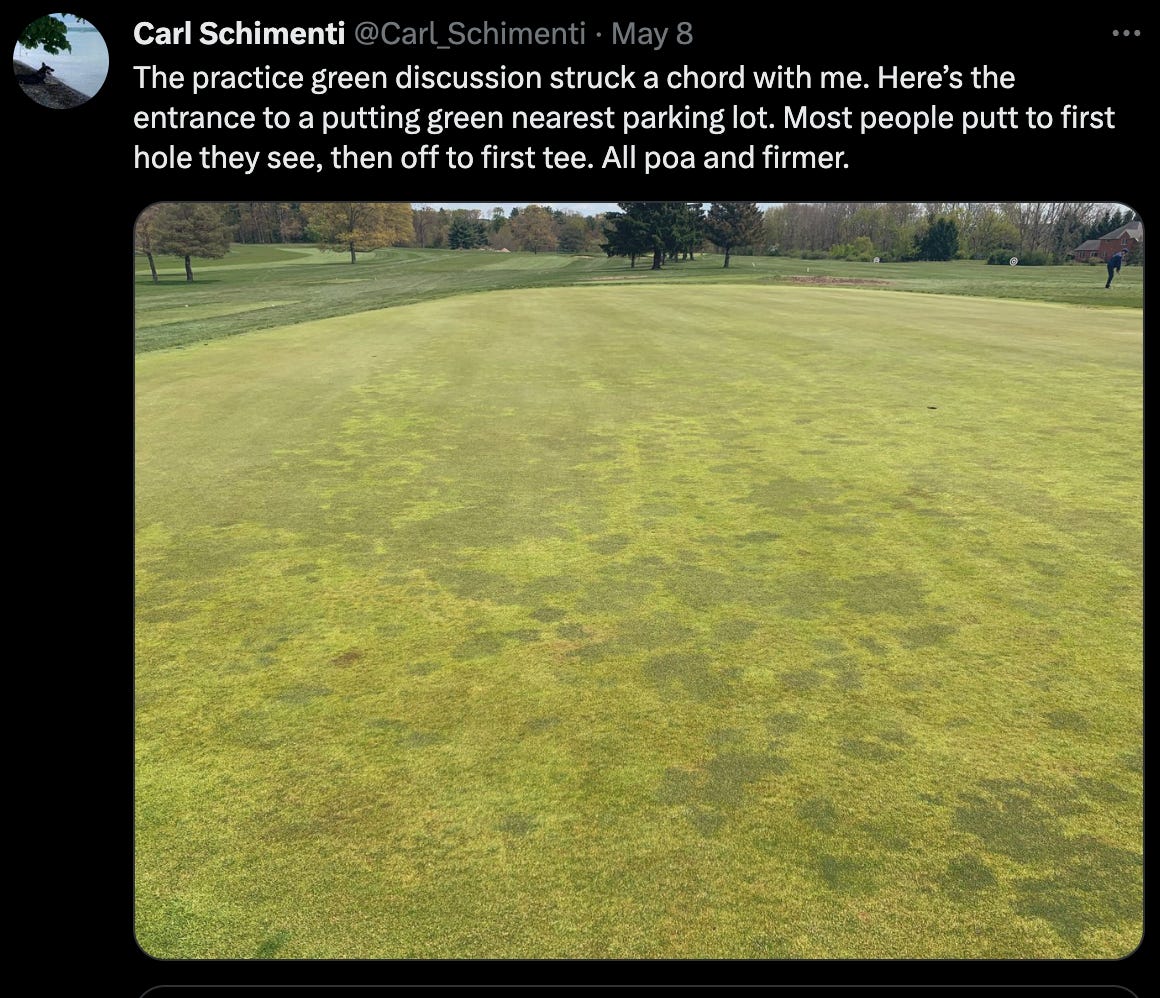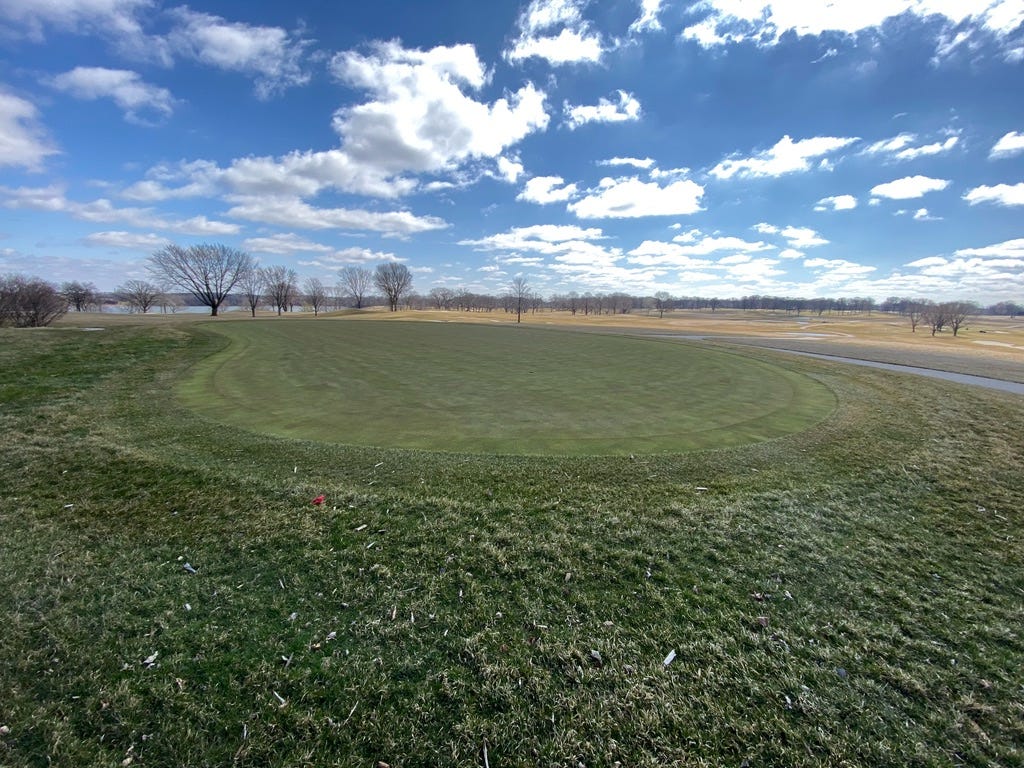No doubt, you’ve heard the phrase: “curiosity killed the cat.” Have you ever thought about what it means? More or less; those who are curious might find themselves in some kind of trouble. I’d wager, whoever came up with the phrase, didn’t have the golf course superintendent in mind, or for that matter, any kind of science.
I’m often asked about a trait that makes for a great golf course superintendent; curiosity is very near the top of my list. When I give a talk, on any subject, this is one of my first slides.
We have to be curious about what we are doing, because very often, problems are solved when one is simply curious about why the issue arises in the first place. There are no unsolvable problems. We just have to be curious enough to uncover the solution.
Last week, Carl Schimenti posted this photo; a putting green, in which the walk-on area is heavily laden with Poa annua.
https://twitter.com/Carl_Schimenti/status/1655632217442271232?s=20
A day later, on this Office Hours podcast, Micah Woods and Richard Forsyth, Director of Courses for Royal Melbourne Golf Club, had a conversation about the public course, next door to Royal Melbourne, Richard and his team maintain. It was a wonderful conversation and I recommend you watch the entire video. Apropos to this topic, at one hour 13 minutes, they show a photo of a practice putting green at the Sandringham course and how at the walk-on site, the conversion to bentgrass took the longest amount of time.
ATC Office Hours: firm bentgrass greens & OM management with Richard Forsyth
Our small putting green at Hazeltine is a busy place. It is located right outside the men’s and women’s locker room, just around the corner from the bag room and a short walk to the first tee. Nowhere on the golf course gets the concentrated foot traffic of the NW corner of the small putting green. The green has been in existence for 12 golf seasons 10 of which have been my tenure, and yet, there is almost no Poa annua to speak of. Why?
Contrast the small putting green, with the member tee on our first hole; maybe the area with the second highest amount of concentrated foot traffic. This surface has been around for much longer than 12 years, probably 20 or more. It’s loaded with Poa annua; why?
I don’t claim to have the answers to this phenomenon. We’ve all seen walk-on/walk-off areas heavily laden with Poa. Traffic, compaction, maybe seed being brought by golfers shoes? Any of these are possible answers to why Poa infests high traffic areas.
What I can tell you about our small putting green is this:
It’s a sand-based root zone, so nutrient holding capacity is minimal.
It has, for nearly all of my 10 years, received only nitrogen and small amounts of potassium fertilizer.
Soil nutrient analysis on our putting surfaces show both potassium and phosphorus below the MLSN guidelines.
I don’t know the details of the other two putting greens I mentioned, but I can tell you what I know about our first tee:
This tee is built on native soil, with a sand-based rootzone of 4-6 inches.
It has for nearly all of my 10 years, received only nitrogen fertilizer.
It probably did, before my time, received regular amounts of complete fertilizer.
Soil nutrient analysis on our teeing grounds show both potassium and phosphorus well above MLSN guidelines.
So in this case, my curiosity leads me to believe there might be something to the amount of nutrients being supplied by the soil. It is something Micah Woods and I discussed in this podcast last month.
There’s a lot to learn from being passionately curious.







